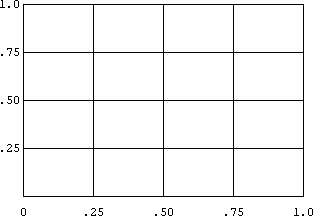How Computers Generate Random Numbers - Chapter 5
| Chapter 4 | Chapter 6 | |||||
index | ||||||
Back to Deley's Homepage | ||||||
| Chapter 4 | Chapter 6 | |||||
index | ||||||
Back to Deley's Homepage | ||||||

| DEFINITION: | |
| SEED = (69069*SEED + 1) mod 2**32 | |
| X = SEED/2**32 | |
| Returns real in range [0,1) {including 0, excluding 1} | |
| Fails 1-D above 350,000 bpd (bins per dimension) | |
| Fails 2-D above 600 bpd | |
| Fails 3-D above 100 bpd | |
| Fails 4-D above 27 bpd | |
| Fails 5-D above 15 bpd | |
| Fails 6-D above 9 bpd | |
| Fails 7-D above 7 bpd | |
| Fails 8-D above 4 bpd | |
| Comments: | |
| This generator is also used by the VAX/VMS FORTRAN intrinsic function RAN, and by the VAX/VMS BASIC function RND. | |
| DEFINITION: | |
| SEED = (65539*SEED) mod 2**31 | |
| X = SEED/2**31 | |
| Returns real in range [0,1) {including 0, excluding 1} | |
| RATING: | |
| Fails 1-D above 200,000 bpd (bins per dimension) | |
| Fails 2-D above 400 bpd | |
| Fails 3-D above 3 b bpd | |
| Fails 4-D above 6 bbpd | |
| Fails 5-D above 6 bbpd | |
| Fails 6-D above 4 bpd | |
| Fails 7-D above 3 bpd | |
| Fails 8-D above 3 bpd | |
| Comments: | |
| Note the extremely poor performance for dimensions 3 and above. This generator is obsolete. | |
| DEFINITION: | |
| SEED = (1103515245*SEED + 12345) mod 2**31 | |
| X = SEED | |
| Returns real in range [0, 2**31) {including 0, excluding 2**31} | |
| RATING: | |
| Fails 1-D above 500,000 bpd (bins per dimension) | |
| Fails 2-D above 600 bpd | |
| Fails 3-D above 80 bpd | |
| Fails 4-D above 21 bpd | |
| Fails 5-D above 15 bpd | |
| Fails 6-D above 8 bpd | |
| Fails 7-D above 7 bpd | |
| Fails 8-D above 5 bpd | |
| DEFINITION: | |
| SEED = (214013*SEED + 2531011) mod 2**31 | |
| X = int( SEED/2**16 ) | |
| Returns real in range [0, 2**15) {including 0, excluding 2**15} | |
| RATING: | |
| Fails 1-D above 3000 bpd (bins per dimension) | |
| Fails 2-D above 700 bpd | |
| Fails 3-D above 84 bpd | |
| Fails 4-D above 16 bpd | |
| Fails 5-D above 15 bpd | |
| Fails 6-D above 7 bpd | |
| Fails 7-D above 6 bpd | |
| Fails 8-D above 4 bpd | |
| Comments: | |
| The poor performance for 1-d is partly due to truncating the lower 16 bits of SEED before returning X. X is returned as a 15 bit positive signed integer. | |
| DEFINITION: | |
| SEED = (134775813*SEED + 1) mod 2**32 | |
| X = int(SEED/2**16) | |
| Returns real in range [0, 2**16) {including 0, excluding 2**16} | |
| RATING: | |
| Fails 1-D above 6000 bpd (bins per dimension) | |
| Fails 2-D above 700 bpd | |
| Fails 3-D above 87 bpd | |
| Fails 4-D above 27 bpd | |
| Fails 5-D above 13 bpd | |
| Fails 6-D above 9 bpd | |
| Fails 7-D above 7 bpd | |
| Fails 8-D above 4 bpd | |
| Comments: | |
| The poor performance for 1-d is partly due to truncating the lower 16 bits of SEED before returning X. X is returned as a 16 bit unsigned integer. | |
| Chapter 4 | Chapter 6 | |||||
index | ||||||
Back to Deley's Homepage | ||||||